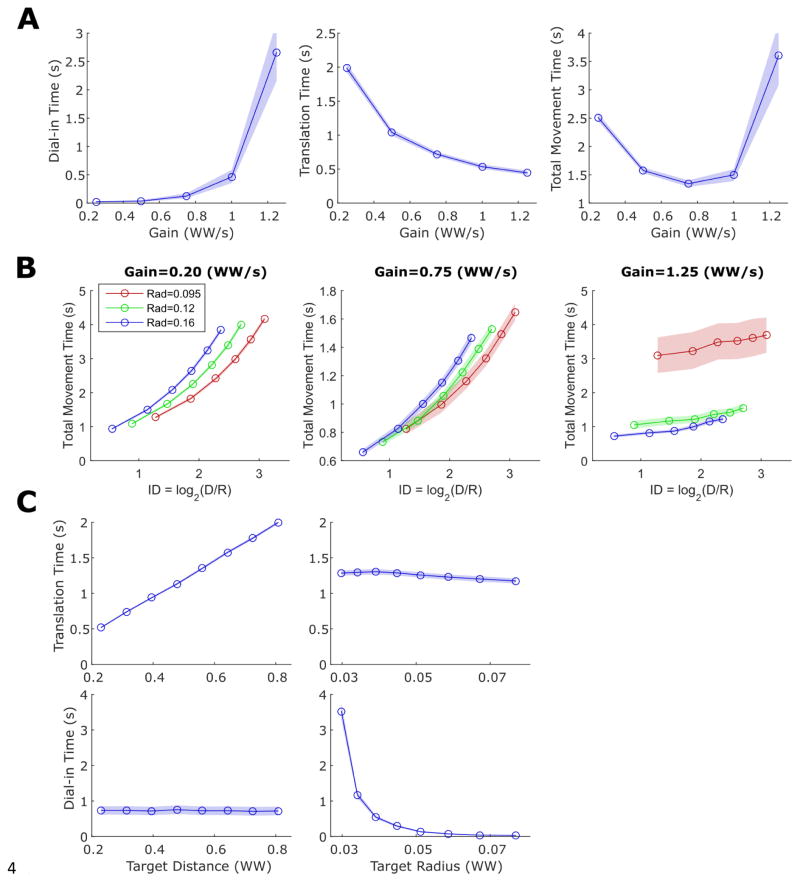Figure 5.
A highly simplified computer model of iBCI cursor movements featuring signal-independent decoding noise reproduces all of the movement time relationships we empirically observed in figures 2–4. One hundred movements were simulated for each condition and the shaded regions indicate 95% confidence intervals. (A) Simulated gain vs. movement time curves are U-shaped, as in figure 2. (B) The simulated ID vs. movement time curves diverge for low and high gains, as in figure 3. (C) Simulated dial-in time is a power law function of radius (independently of distance) and simulated translation time is a linear function of distance (independently of radius), as in figure 4.

